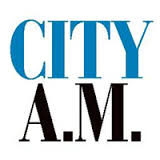
News publishers have had a hard time of it recently. While it didnt herald a Y2K moment like some feared at the turn of the millennium, in the aftermath of GDPRs immediate impact it seems the walled gardens of Google and Facebook are only casting longer shadows over the smaller players.
The duopoly is hoovering up the advertising dollars, attracting 84 per cent of global spending on digital advertising (excluding China) in 2017, according to GroupM.
The duopoly is pushing media brands to their limits like never before, and their future is being brought into question by many in the industry.
Read more: Google faces a backlash from adland
Theres no doubt publishers have been ill-prepared for the onslaught of new platforms and readers passion to consume content digitally. Publishers are trying out new business models, and while some publications – like the New York Times – will thrive through exclusivity and subscription revenues, not everyone has this brands reputation to build on.
Those that continue offering their content for free will need to find other ways to open up margins; that means cutting out the middlemen like Google where possible.
Oath may be the closest example at scale, as it can sell inventory across its properties, including HuffPost, AOL, Yahoo, Engadget, and others.
Last weeks announcement that The Guardian, The Telegraph, and News UK were pooling their digital advertising inventory in order to create an alternative to Google looks like a step in the right direction.
The Ozone Projects ability to ensure quality, brand safety, and transparency in buying across an audience of nearly 40m readers, as well as facilitating closer integration of audience data between advertisers and publishers directly, may be enough to pull advertisers in.
How the Ozone Project plays out will be fascinating to watch, as centralisation is not necessarily a selling point. Brokering access to online ad space on these sites, including News UK-owned publications The Times and The Sun, from a single platform, is a bold move, though not unprecedented. The scale of their aggregated inventory will doubtless get advertisers attention, as well as the fact that they have loyal and engaged audiences.
Ultimately, exclusivity of that inventory may be the lynchpin in their long-term success.
Between now and the autumn launch of the Ozone Project, the partners will be closely gauging their risks and whether the investment is sufficient to unlock a true advantage. Whatever the outcome, we mustnt underestimate the significance of these publishers decision to put competition aside and collaborate on achieving a better ecosystem for all parties, and a stronger future for journalism.
Read more: I'm sick of bad press releases from lazy PRs who don't even read me
[contf]
[contfnew]

CityAM
[contfnewc]
[contfnewc]






